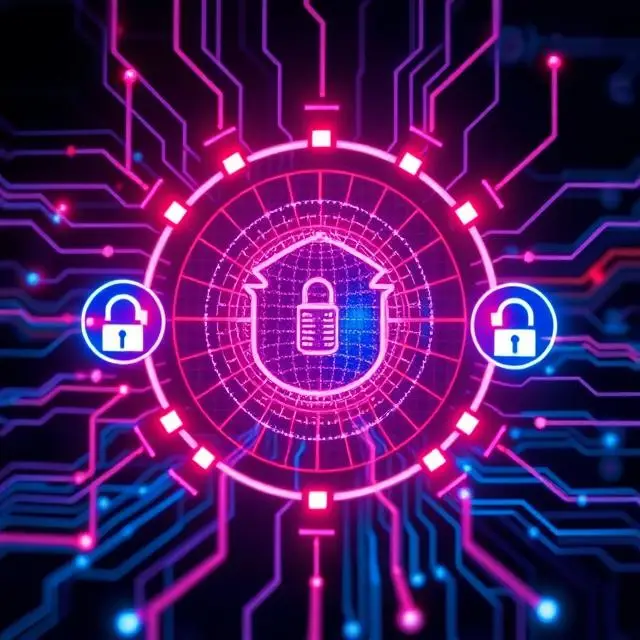In a time when data is power, truth has never been more fragile—nor more critical. Whistleblowers are the sentinels of accountability in democracies and dictatorships alike. From leaking classified documents that expose mass surveillance to revealing corruption in corporate boardrooms, whistleblowers risk their careers, reputations, and sometimes lives, to speak truth to power.
Yet as governments and corporations become increasingly capable of monitoring digital activity, how can whistleblowers remain anonymous? How can evidence be authenticated without compromising the source? How do we ensure that technology doesn’t crush dissent but protects it?
The article explores the role of cryptography in enabling, securing, and authenticating whistleblowing in the digital age—from anonymous leaks and secure communication to post-quantum protections and ethical frameworks.
Section I: The New Era of Whistleblowing
1. Whistleblowing in the 21st Century
The archetype of the whistleblower has changed. Once depicted as a lone insider mailing a bundle of documents to a newspaper, today’s whistleblowers often operate in a world where:
- Metadata is weaponised
- Every keystroke is traceable
- Cloud accounts and internal networks are monitored
- Legal protections are patchy or non-existent
High-profile cases include:
- Edward Snowden – Exposed global mass surveillance by NSA
- Chelsea Manning – Leaked military and diplomatic cables
- Frances Haugen – Revealed Facebook’s internal knowledge of harms
- Peiter “Mudge” Zatko – Exposed Twitter’s security vulnerabilities
In every case, the act of whistleblowing was not just about having evidence—it was about how to secure, transmit, and verify that evidence safely.
Section II: Cryptographic Tools for the Whistleblower
1. Anonymous Communication Channels
One of the most important protections for whistleblowers is the ability to communicate without being identified. Common cryptographic methods and platforms include:
- The Tor Network: Routes traffic through volunteer-run servers, concealing IP addresses and locations
- SecureDrop: An open-source whistleblower submission system developed by Freedom of the Press Foundation
- OnionShare: Enables anonymous file sharing over Tor
- Tails OS: A live operating system that leaves no trace and routes all communications through Tor
These tools rely on a combination of:
- Public key cryptography
- Perfect forward secrecy
- Anonymising protocols
- Metadata minimisation
2. Encrypted Messaging
For whistleblowers who need to coordinate with journalists or lawyers, encrypted messaging is essential. Recommended applications include:
- Signal: End-to-end encrypted messaging with sealed sender and disappearing messages
- Wire: Supports secure group communication and file sharing
- Session: A decentralised messenger that requires no phone number
Cryptography ensures that messages are readable only to the intended recipient, not even the platform provider.
Section III: Verifying Leaks Without Exposing Sources
1. Cryptographic Hashing
Whistleblowers often leak files that must be:
- Authenticated (confirmed as unaltered)
- Time-stamped (to prove they were created before suppression or retaliation)
Cryptographic hash functions like SHA-256 are used to generate a unique fingerprint of a file. Journalists and lawyers can compare the hash of a published leak to the original file to prove it is genuine.
2. Zero-Knowledge Proofs
In some situations, whistleblowers may want to prove knowledge or authenticity of a fact without revealing the fact itself. Zero-knowledge proofs (ZKPs) allow:
- A whistleblower to prove they have access to a document
- Without disclosing the contents of that document
ZKPs are increasingly used in secure multiparty computation, anonymous credential systems, and privacy-preserving audits.
Section IV: Legal and Ethical Tensions
1. When Cryptography Meets the Law
While cryptography can protect whistleblowers, it can also be criminalised. Some jurisdictions treat:
- The use of anonymity tools as suspicious
- Encrypted communications as evidence of wrongdoing
- Whistleblowing as espionage
Laws like the US Espionage Act and the UK’s Official Secrets Act have been used to prosecute leakers, even when acting in the public interest. Meanwhile, many developing countries lack any whistleblower protections at all.
In New Zealand, the Protected Disclosures (Protection of Whistleblowers) Act 2022 provides a legal framework, but it does not cover disclosures made to the media unless internal or regulatory channels have failed.
2. Journalistic Ethics and Source Protection
Cryptography empowers journalists to:
- Authenticate digital evidence
- Maintain source confidentiality
- Prevent document tampering
However, journalists must also navigate dilemmas:
- How to verify documents without revealing metadata
- How to store leaks securely over time
- How to report without compromising whistleblowers’ anonymity
Strong cryptographic practices—combined with ethical codes—form the backbone of responsible investigative journalism in the digital age.
Section V: Post-Quantum Threats to Whistleblower Security
1. The Quantum Problem
If and when quantum computers capable of breaking today’s encryption emerge, whistleblower tools that rely on:
- RSA
- Elliptic Curve Cryptography (ECC)
- DSA
… will become vulnerable.
This includes SecureDrop key exchanges, Tor’s circuit establishment, and most encrypted emails sent today.
Whistleblowers today may be safe—but archives of encrypted leaks could be decrypted years later, revealing metadata or compromising identities.
2. Post-Quantum Countermeasures
To prepare for the quantum future, tools and platforms must adopt:
| Post-Quantum Algorithm | Application |
|---|---|
| Kyber (NIST finalist) | Secure key exchanges in messengers and submission tools |
| Dilithium | Digital signatures for documents and software |
| SPHINCS+ | Stateless, hash-based signing for anonymity systems |
Additionally, the Tor Project and SecureDrop are actively researching hybrid quantum-safe models.
Section VI: A Cryptographic Protocol for Safe Whistleblowing
Here is a hypothetical outline of an end-to-end cryptographic framework for safe, anonymous whistleblowing:
- Environment: Boot from Tails OS to ensure no residual data
- File Collection: Strip metadata from documents using MAT2
- Proof Creation: Generate SHA-256 hashes; sign using post-quantum signature
- Anonymised Channel: Access SecureDrop over Tor, using OnionShare for large files
- Optional ZKP: Generate a zero-knowledge proof that links the whistleblower to an internal role or access level, without naming them
- Backup: Upload a copy to IPFS (InterPlanetary File System) encrypted with post-quantum public key, hosted by trusted NGOs
- Communication: Use Signal or Session for further coordination
Each stage should be automated in open-source tooling to minimise human error.
Section VII: Building Infrastructure to Protect Truth
1. Whistleblower Platforms and NGOs
Organisations that support cryptographic protections for whistleblowers include:
- Freedom of the Press Foundation (maintains SecureDrop)
- The Signals Network
- GlobaLeaks
- Reporters Without Borders
- Access Now (Digital Security Helpline)
These groups advocate for both technical solutions and legal reforms to support whistleblowers worldwide.
2. Future-Proof Architectures
As surveillance tools evolve, whistleblower tools must too. Critical areas of future development include:
- Post-quantum SecureDrop and Tor circuits
- Decentralised, censorship-resistant publication platforms
- Zero-trust verification for anonymous users
- Smart contract-based bounty systems for verified disclosures
Cryptographic innovation must be embedded in policy, journalism, and technology governance to ensure it keeps pace with authoritarian capabilities.
Conclusion: The Cryptographer’s Oath
In an era where truth is often buried beneath complexity, it is cryptography that provides the tools for truth-tellers to emerge from the shadows—safely, anonymously, and credibly.
The challenge is not only technical. It is moral. Cryptographers, journalists, developers, and lawmakers must work together to enshrine dissent as a protected act, and whistleblowing as a legitimate, even heroic, form of civic participation.


